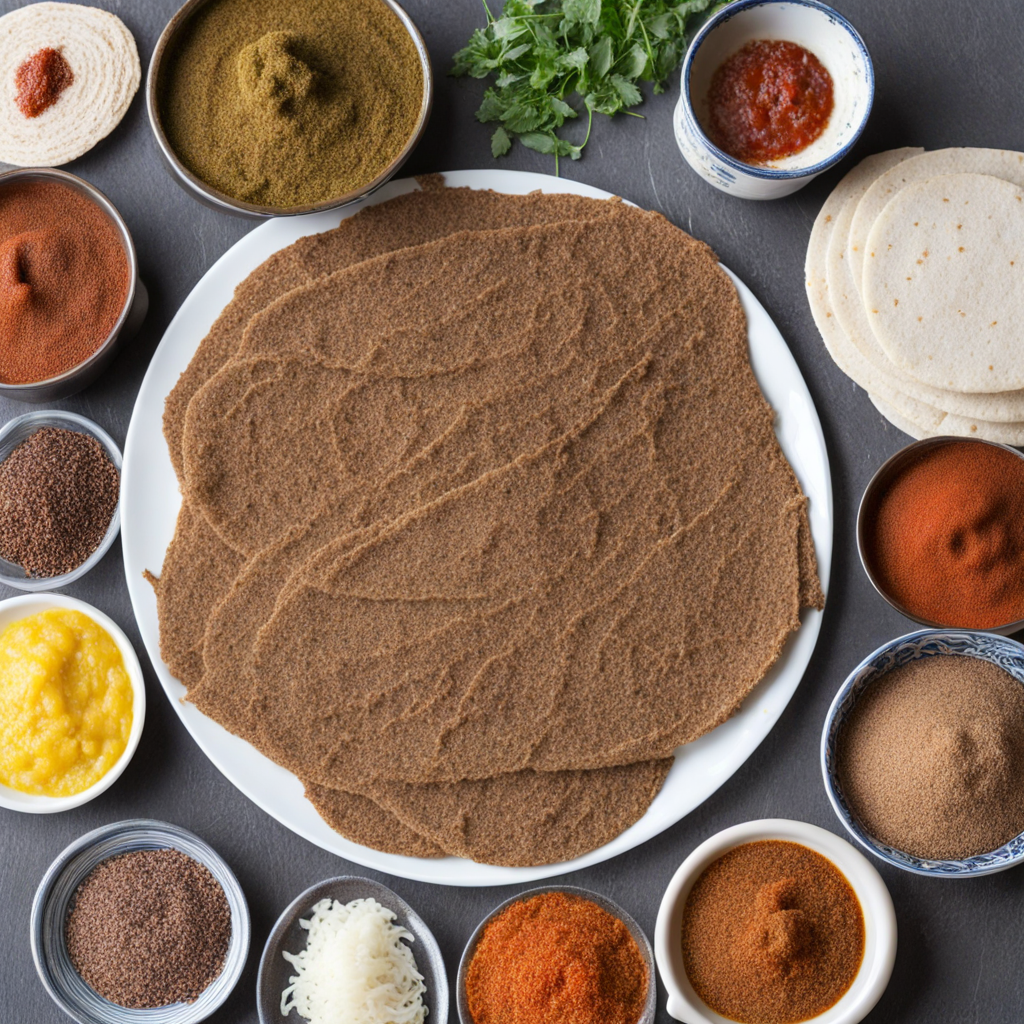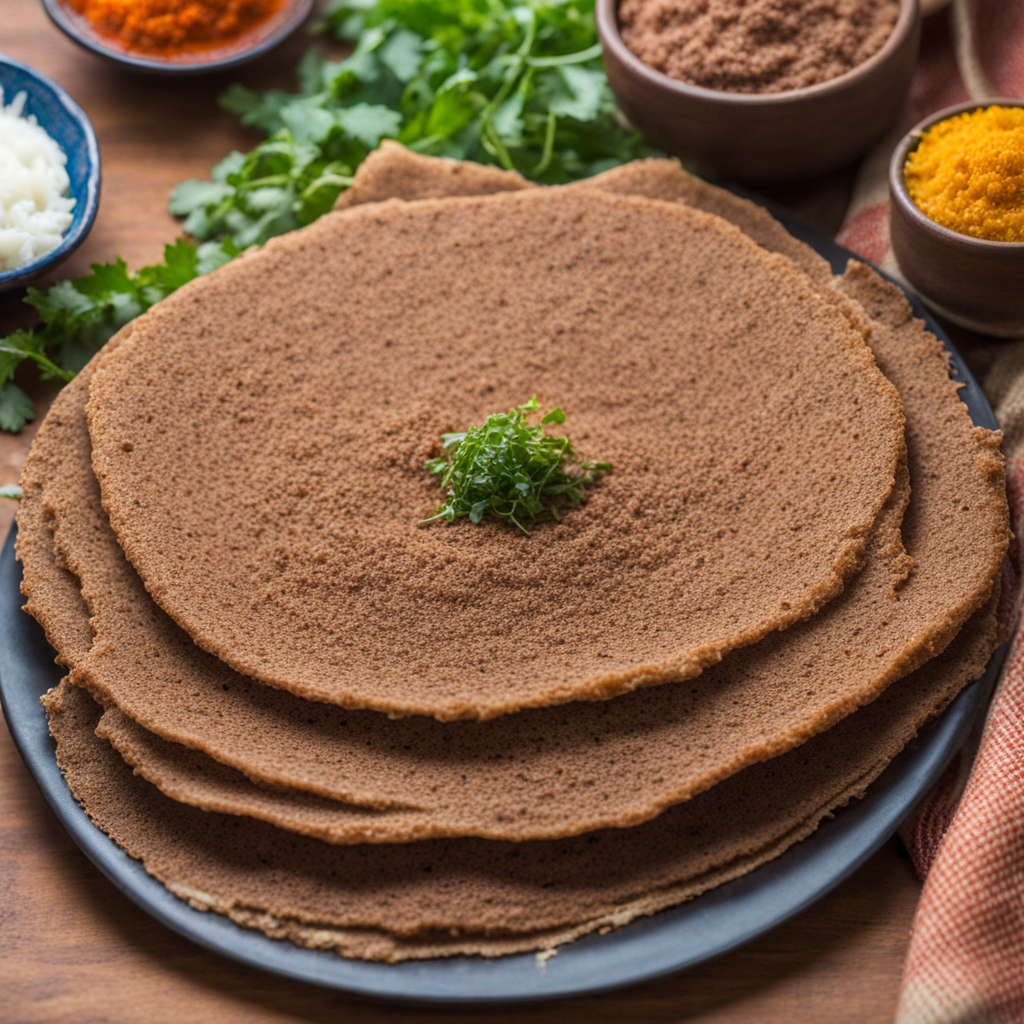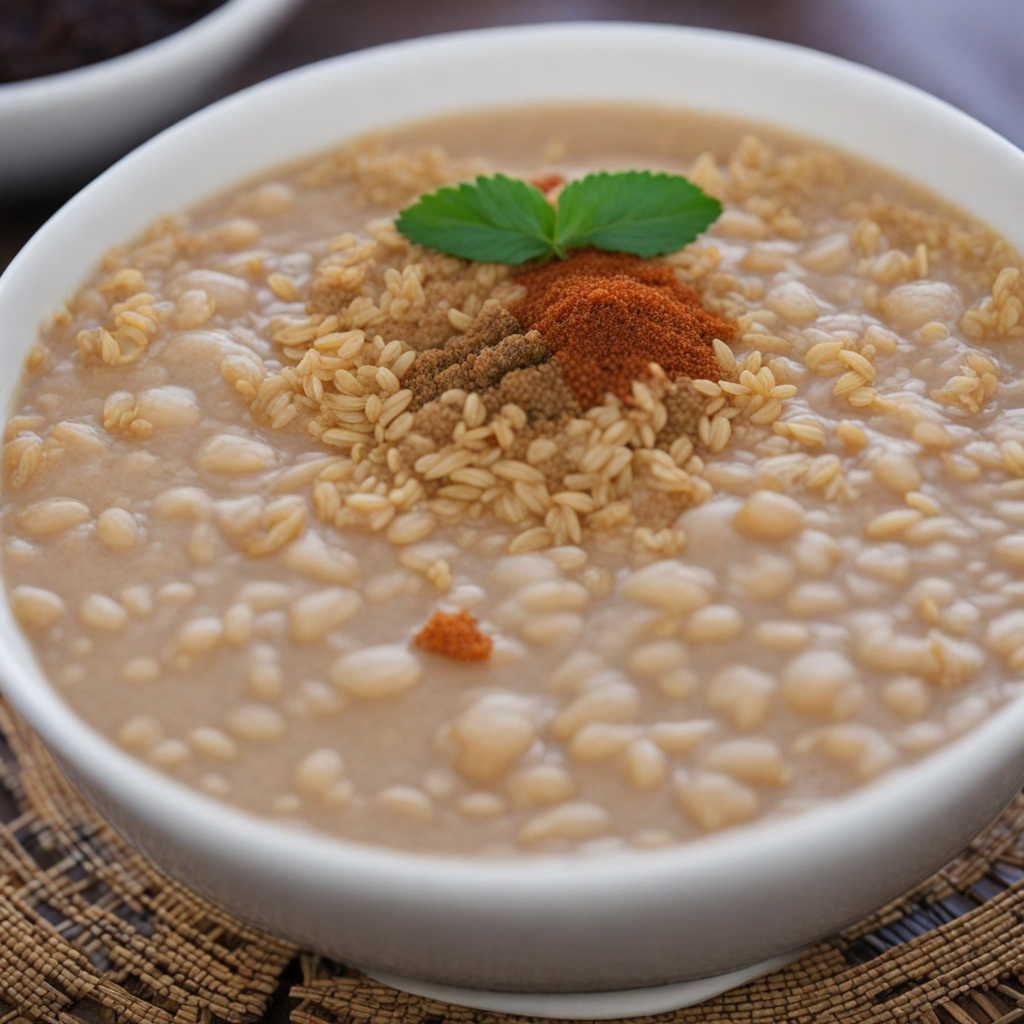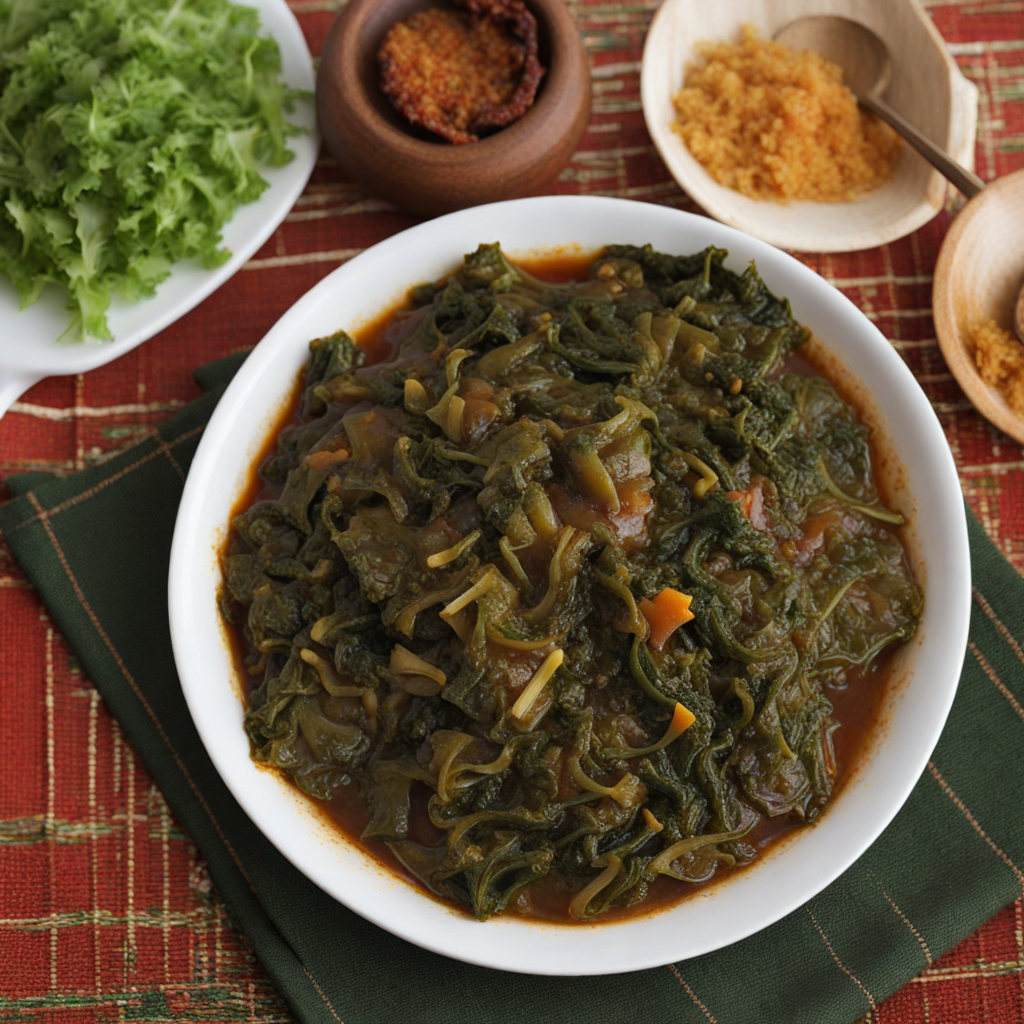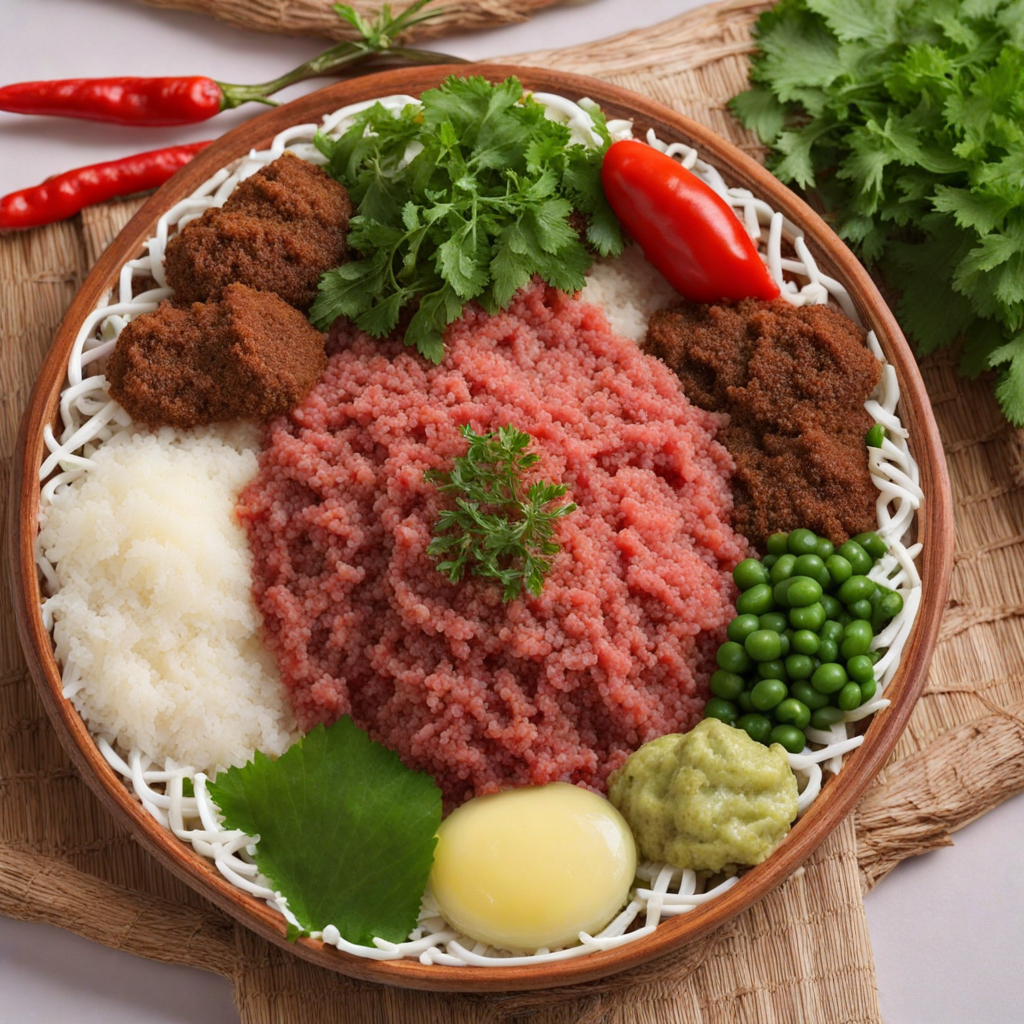Firfir
Firfir is a traditional Ethiopian dish that showcases the rich and vibrant flavors of the country's culinary heritage. This savory dish is primarily made from leftover injera, the spongy sourdough flatbread that is a staple in Ethiopian cuisine. The injera is torn into bite-sized pieces and sautéed with a medley of spices, onions, and sometimes tomatoes, creating a delightful fusion of textures and tastes. The spices, often including berbere — a spice blend of chili peppers, garlic, and various aromatic herbs — infuse the dish with a warm, spicy kick that is both invigorating and comforting. The preparation of Firfir varies regionally and can be customized with additional ingredients such as shredded meat, lentils, or vegetables, allowing for an array of flavors that cater to different palates. Some variations are served with a drizzle of spicy sauce or a side of yogurt, which balances the heat and enhances the overall experience. The dish is typically enjoyed communally, with everyone sharing from a large platter, reflecting the Ethiopian culture of togetherness and hospitality. Eating Firfir is not just about taste; it’s also about the experience. Diners usually use their hands to scoop the dish with pieces of injera, making each bite a delightful blend of flavors and textures. The combination of the tender, chewy injera with the aromatic and spicy mixture creates a satisfying harmony that is both hearty and soul-nourishing. Whether enjoyed for breakfast, lunch, or dinner, Firfir promises a memorable culinary adventure that will leave you yearning for more.
How It Became This Dish
The History of ፍርፍር (Firfir) from Ethiopia #### Origins and Ingredients Firfir, a beloved traditional Ethiopian dish, holds a significant place in the culinary landscape of Ethiopia. Its origins can be traced back to the country's diverse cultural tapestry, which is shaped by a variety of ethnic groups, each contributing to the rich culinary heritage of the nation. The dish typically consists of shredded injera, a sourdough flatbread made from teff flour, which is a staple food in Ethiopia, combined with a range of spices and sometimes meat. Injera itself has a deep-rooted history dating back thousands of years, with teff being one of the oldest cultivated grains in Africa. The distinctive sour flavor of injera results from the fermentation process, which allows for the development of beneficial probiotics. Firfir utilizes leftover injera, showcasing the Ethiopian ethos of minimizing waste and making the most of available resources. The spices used in firfir vary by region and family tradition but commonly include berbere, a fiery blend of chili peppers and various spices, and mitmita, a spicier mixture often used in Ethiopian cuisine. These spices not only impart flavor but also highlight the importance of spice trade routes that have historically passed through the Horn of Africa. #### Cultural Significance Firfir is more than just a dish; it represents communal values and Ethiopian hospitality. Often served during breakfast or as a quick meal, firfir evokes a sense of home and comfort. Traditionally, it is prepared with care, and family members often gather around the table to enjoy it together. This communal aspect of eating is central to Ethiopian culture, where sharing food fosters connections and strengthens familial bonds. The dish also manifests the Ethiopian approach to cooking, where food preparation is a ritual imbued with meaning. The act of tearing the injera into pieces, mixing it with spicy sauces, and enjoying it with one’s hands reflects the cultural practice of eating with the fingers, promoting intimacy and shared experience. In many Ethiopian households, firfir is a staple meal, particularly after festivities or large gatherings, as it is a way to utilize leftover injera creatively. #### Development Over Time As Ethiopia has modernized and globalized, firfir has also evolved while remaining true to its roots. While traditional recipes continue to thrive, innovative variations have emerged. With the influence of globalization, other ingredients have found their way into the dish, catering to diverse palates. For instance, firfir can now include a range of proteins, from shredded chicken and beef to lentils, making it adaptable to vegetarian diets. Regional variations of firfir reflect Ethiopia’s multifaceted identity. In the northern parts of the country, such as Tigray, firfir may feature additional ingredients like tomatoes and onions, while in the southern regions, it may incorporate local vegetables and spices unique to those areas. This regional diversity illustrates how a single dish can evolve based on local agricultural practices, available ingredients, and cultural influences. The rise of the Ethiopian diaspora has also played a crucial role in the development of firfir. As Ethiopian communities spread across the globe, they have brought their culinary traditions with them, introducing firfir to new audiences. This has resulted in a fusion of flavors where local ingredients can be combined with traditional Ethiopian spices, creating new interpretations of the dish. In recent years, firfir has gained popularity beyond Ethiopian communities, attracting food enthusiasts interested in exploring the rich flavors of Ethiopian cuisine. Food bloggers and chefs have begun to share their interpretations of firfir, highlighting its versatility and inviting more people to experience this traditional dish. #### Modern-Day Firfir: A Fusion of Tradition and Innovation Today, firfir is not only consumed in homes but also finds a place on the menus of Ethiopian restaurants worldwide. Chefs are experimenting with the dish, offering variations like firfir with avocado, firfir with eggs, or even firfir served in a burrito-style wrap. This innovative approach is helping to keep the dish relevant while still honoring its traditional roots. Firfir is also a popular choice for food festivals and cultural events, where it serves as a gateway for people to experience Ethiopian culture. Through cooking demonstrations and tastings, chefs and home cooks alike share the stories behind firfir, emphasizing its significance in fostering community and connection. Moreover, social media has played a pivotal role in the resurgence of interest in Ethiopian cuisine, with platforms like Instagram and TikTok serving as stages for showcasing colorful and visually appealing dishes, including firfir. These platforms allow for the sharing of recipes, cooking tips, and cultural anecdotes, promoting a greater understanding of Ethiopian food and its heritage. #### Conclusion The history of firfir is a testament to Ethiopia’s rich culinary heritage and the resilience of its traditions. From its humble beginnings as a dish meant to utilize leftover injera, firfir has evolved into a symbol of community, hospitality, and culinary innovation. As it continues to adapt to modern tastes while maintaining its cultural significance, firfir embodies the spirit of Ethiopian cuisine—diverse, flavorful, and deeply rooted in shared experiences. Whether enjoyed in a bustling restaurant in Addis Ababa or prepared in a cozy kitchen in the diaspora, firfir remains a cherished dish that connects generations, honors tradition, and welcomes all to the rich tapestry of Ethiopian culture. As the world becomes more interconnected, the story of firfir serves as a reminder of the power of food to bridge cultures and foster understanding, one flavorful bite at a time.
You may like
Discover local flavors from Ethiopia


